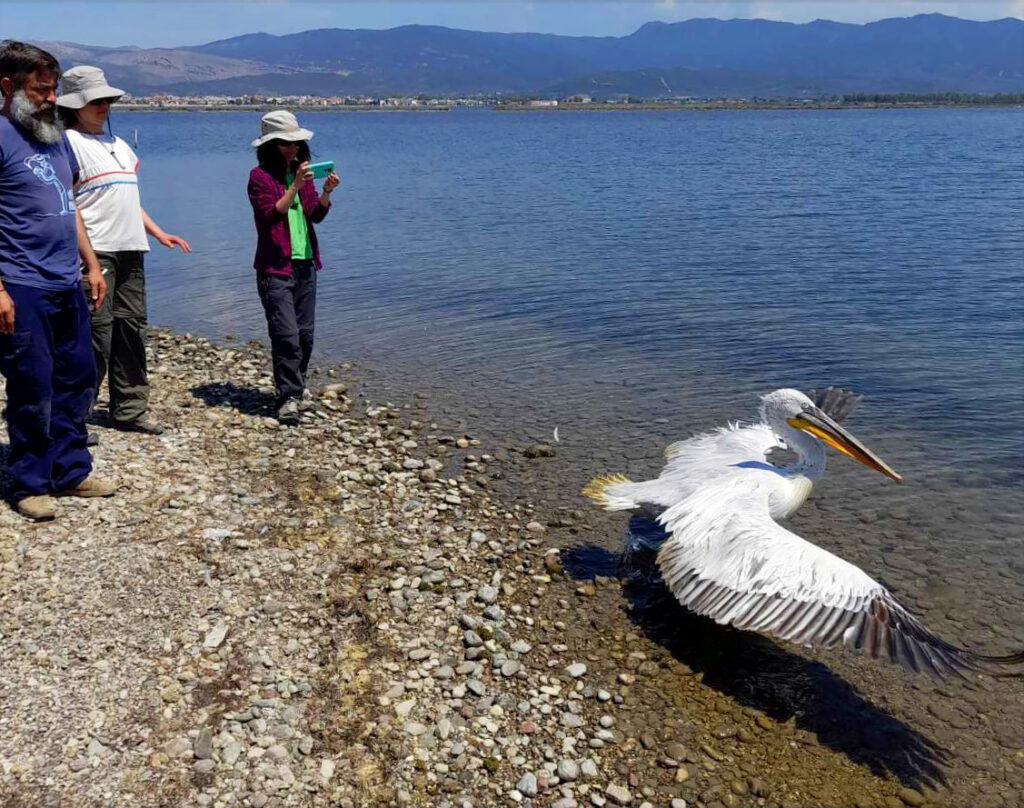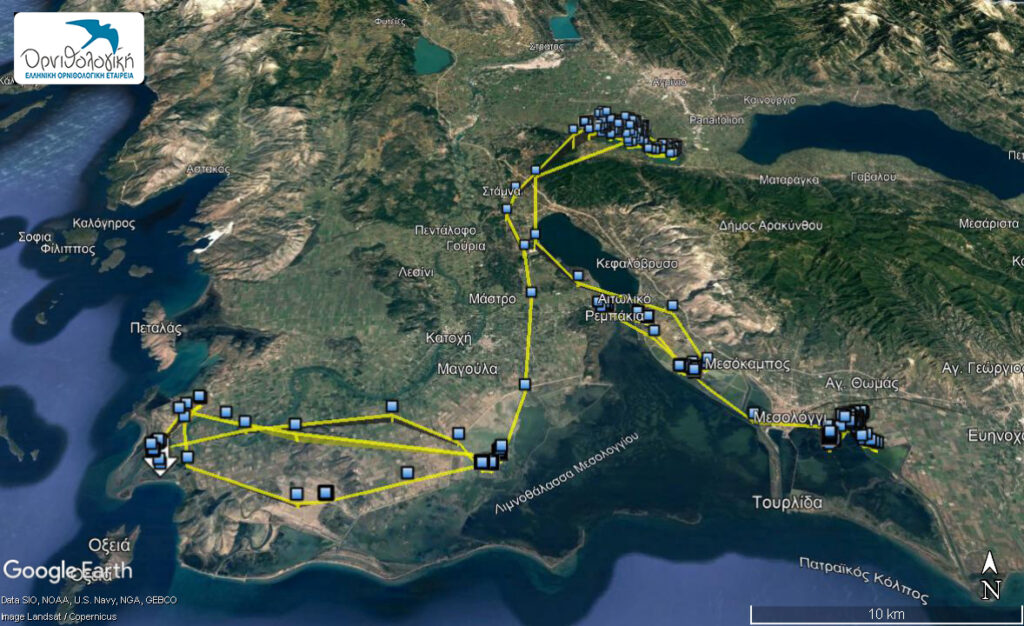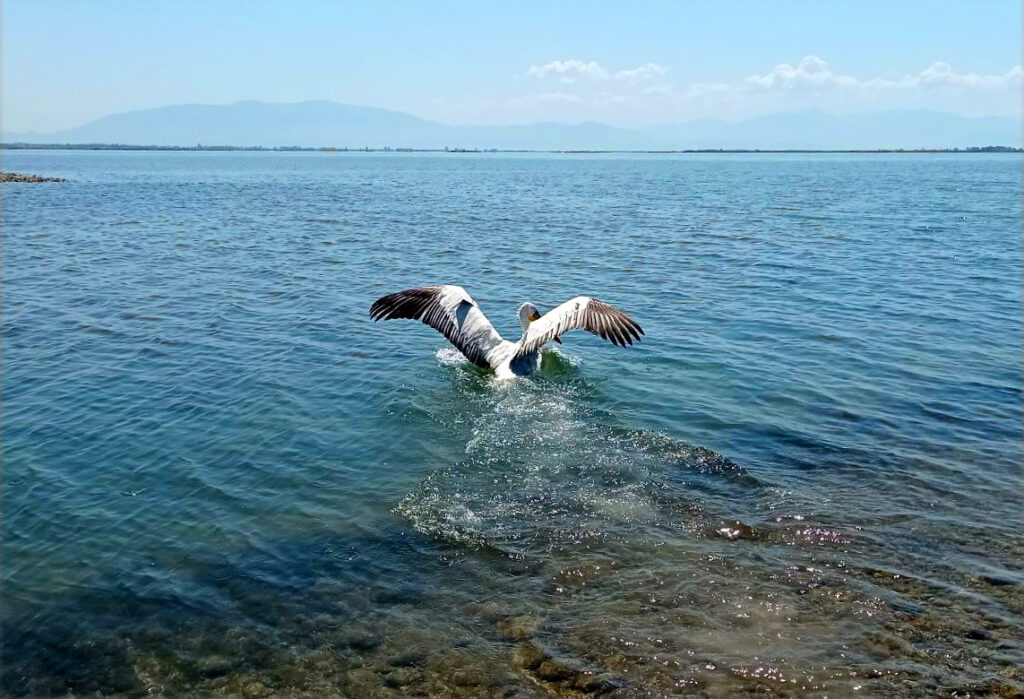After a few unsuccessful attempts, the team of Hellenic Ornithological Society (HOS)/BirdLife Greece succeeded in tagging with a satellite transmitter one more Dalmatian Pelican in Western Greece, which is the second one in the Messolonghi region.

Named after a northern wind, Tramountana was met at a roosting site within the Klisova lagoon where a few Dalmatian Pelican breeding colonies exist. Measurements of Tramountana’s bill revealed it’s a female bird, while from her appearance the Hellenic Ornithological Society team concluded this is an adult that most probably nested this year in the area.
The transmitter has already provided the scientists with valuable data about the species’ movements in the country. Right after her release, Tramountana flew to Eastern Kleisova where she spent the rest of the day and the following night fishing freshwater fish. Since then, she spent a few days in the salt marsh in Messolonghi and then stayed for 10 days in Lyshimachia Lake before returning to the Western-Central Messolonghi lagoon and the Acheloos delta.

Apart from the tagging mission, HOS/BirdLife Greece recently ringed several young birds in Amvrakikos Bay, during the first Dalmatian Pelicans ringing action to be implemented in the area in almost 20 years. Many more birds have been ringed by the team of HOS throughout Western Greece. In addition, both Maestros, the first Dalmatian Pelican with a satellite transmitter in Western Greece, as well as Anna, a Dalmatian Pelican tagged last year in the Amvrakikos Bay area, continue to provide HOS team with important tracking data. You can also track the tagged pelicans almost in real-time.
Satellite transmitters are considered to be a common and indispensable tool, that helps scientists access critical information about birds’ movements. Thanks to the telemetry data they provide, scientists can follow the birds on their journeys, locate the areas they use to feed, roost and breed, as well as gather information about altitude and speed of flight – often in real-time. All the collected data contribute to increasing our knowledge of specific species but, most importantly, they can be used for designing and implementing appropriate and urgent conservation measures.

Dalmatian Pelicans that breed in Western Greece, i.e. in the Amvrakikos Bay and the Messolonghi lagoon, appear to be moving only along the coastline of Western Greece and probably also visit wetlands on the coasts of Albania and Montenegro. In other words, these birds move around in western parts of the country but hardly come in contact with Dalmatian Pelicans in the rest of Greece, most likely due to the mountain range of Pindos that appears to be an unsurpassable obstacle for them.
This geographical isolation may have kept the Dalmatian Pelicans of Western Greece safe from the recent devastating avian influenza epidemic. Earlier this year it swept through the species’ colonies in Northern and Central Greece killing more than 2,000 birds.

The latest tagging mission was assigned to HOS/BirdLife Greece by the Managing Unit of Messolonghi National Park and Protected Areas of Western Central Greece, and it was part of a project for the conservation of two species (the Dalmatian Pelican – Pelecanus crispus and the White Stork – Ciconia ciconia). The mission was implemented in collaboration with the European-funded “Pelican Way of LIFE” initiative under which 7 partners from 5 countries work for the protection of Dalmatian Pelicans in Europe and on the international level.
HOS/BirdLife Greece would like to thank the Society for the Protection of Prespa (SPP) for their support and assistance.